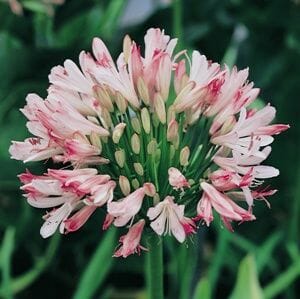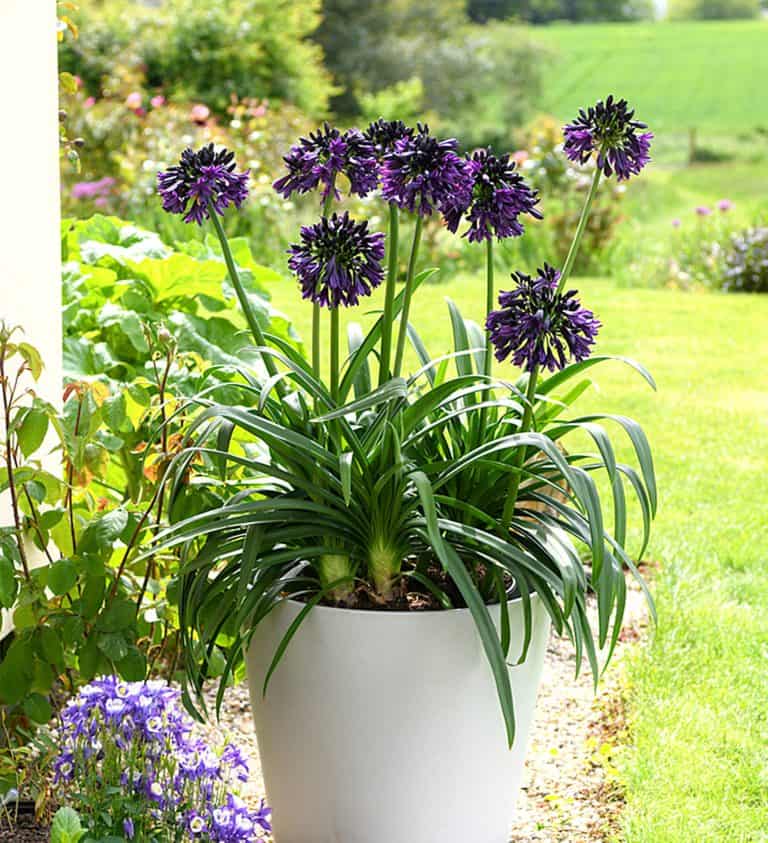Agapanthus Varieties: Picking the most effective for Your Landscape
Agapanthus Varieties: Picking the most effective for Your Landscape
Blog Article
Releasing the Secret to Effective Agapanthus Growing: Idea for a Flourishing Garden
In the world of gardening, cultivating agapanthus successfully needs a critical approach that includes different facets of plant care. With careful focus to detail, one can open the secrets to supporting these sensational flowers, bring about a yard that flourishes with beauty and vibrancy. By understanding the nuances of agapanthus cultivation, one can create a setting where these plants prosper and grow perfectly. In the following conversation, we will certainly discover necessary tips and methods that will guide you in the direction of a growing agapanthus garden, offering insights right into best techniques, soil conditions, watering methods, and more.
Planting Agapanthus: Finest Practices
When planting Agapanthus, appropriate soil prep work is necessary for making sure effective development and development of these gorgeous blossoms. Agapanthus, typically referred to as Lily of the Nile or African lily, grows in well-draining soil with a slightly acidic to neutral pH degree - Agapanthus. Before growing, it is vital to amend heavy clay soils with raw material such as compost or peat moss to enhance drainage and give important nutrients for the plants
To plant Agapanthus, choose an area that receives complete sunlight to partial color, as this will advertise healthy and balanced development and bountiful blooming. Dig an opening twice the size of the plant's origin sphere and position the Agapanthus at the exact same depth it was formerly growing. Carefully backfill the opening with dirt, pushing down firmly to remove any type of air pockets around the origins.
Water the freshly grown Agapanthus extensively and continue to maintain the dirt uniformly wet, particularly throughout the plant's active growing season. Agapanthus. Applying a balanced fertilizer once a month can better sustain the plant's growth and flowering. By complying with these best methods for growing Agapanthus, you can produce a spectacular display screen of these captivating flowers in your yard
Perfect Dirt Issues for Agapanthus
For optimum development and blooming success of Agapanthus plants, guaranteeing the soil conditions are perfect is important. Agapanthus grows in well-draining dirt with a somewhat acidic to neutral pH degree ranging from 6.0 to 7.0. This kind of soil enables adequate water drainage, preventing waterlogging which can result in root rot. To improve soil drain, take into consideration including raw material such as compost or peat moss when preparing the growing website. Furthermore, Agapanthus favors soil that is abundant in nutrients, so integrating a well balanced fertilizer during the expanding season can advertise healthy and balanced development and vibrant blooms.

Watering and Feeding Tips
To make sure healthy development and dynamic blooms, correct watering and feeding techniques are necessary for successful Agapanthus growing. Agapanthus plants benefit from normal watering, particularly throughout the expanding period.
When it pertains to feeding Agapanthus, a balanced fertilizer with equivalent components nitrogen, phosphorus, and potassium can be applied in the springtime to advertise healthy growth and blooming. Slow-release fertilizers are perfect for providing nutrients progressively over an extensive duration. Stay clear of over-fertilizing, as this can cause excessive vegetation development at the expenditure of blooms.
Furthermore, incorporating organic issue like compost right into the soil can enhance nutrient levels and enhance soil framework, aiding in the general health of the Agapanthus plants. By adhering to these watering and fertilizing ideas, gardeners can guarantee their Agapanthus plants flourish and create magnificent display screens of blossoms.
Trimming and Deadheading Techniques
Appropriate pruning and deadheading methods play a critical duty in preserving the wellness and appearances of Agapanthus plants, complementing the essential methods of watering and fertilizing for effective cultivation. Pruning Agapanthus involves removing spent blossom heads, dead or yellowing fallen leaves, and overall shaping of the plant to promote much better development. Deadheading, the process of eliminating faded blossoms, not only enhances the plant's appearance yet additionally motivates more flowering.
When deadheading Agapanthus, it is a good idea to snip off the blossom stem at the base making use of sharp, tidy shears. This process Full Report reroutes the plant's great post to read energy from seed production back right into root and foliage growth, advertising a healthier and extra robust plant. Regular deadheading can extend the flowering period of Agapanthus and protect against self-seeding, which can lead to overcrowding.
In regards to trimming, Agapanthus typically take advantage of a light trim after flowering to clean the plant and motivate fresh development. Cutting down the invested blossom stems and removing any type of dead or broken vegetation assists preserve the plant's vitality and general appearance. However, it is vital to avoid cutting right into the crown of the plant, as this can weaken its health.

Protecting Agapanthus From Vermins and Diseases
Executing efficient insect and condition administration techniques is crucial to safeguarding the health and vigor of Agapanthus plants in cultivation. One common insect that affects Agapanthus is the Agapanthus borer, a caterpillar that passages right into the plant, creating damages to the flowers and leaves.
Along with bugs, Agapanthus are at risk to conditions such as origin rot and fungal fallen leave places. These concerns can commonly be stopped by making sure appropriate water drainage and avoiding overwatering. Impacted parts of the plant must be promptly removed to protect against further spread if indications of disease appear. Fungicides may likewise be used as a therapy action, complying with the maker's instructions thoroughly. By remaining vigilant and dealing with bug and disease problems promptly, gardeners can aid their Agapanthus prosper and thrive.

Verdict
In conclusion, successful cultivation of agapanthus requires correct planting strategies, optimal soil conditions, sufficient watering and feeding, routine pruning and deadheading, and security from conditions and insects. By complying with these methods and pointers, gardeners can ensure a prospering garden full of beautiful agapanthus flowers. Agapanthus. Keep in mind to preserve regular care and focus to information to advertise the health and durability of these spectacular plants
When growing Agapanthus, proper dirt prep work is necessary for guaranteeing successful growth and development of these stunning flowers.Water the newly grown Agapanthus completely and continue to keep the dirt evenly moist, especially during the plant's active expanding season.For ideal growth and flowering success of Agapanthus plants, guaranteeing the dirt conditions are suitable is essential. When planting or hair transplanting Agapanthus, make certain the soil is well-prepared to give the essential structure for the plants to check develop themselves efficiently. One usual insect that affects Agapanthus is the Agapanthus borer, a caterpillar that passages right into the plant, creating damages to the leaves and blossoms.
Report this page